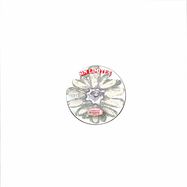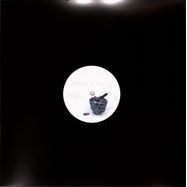
e-mail reminder
If this item in stock, then you will get an infomation E-Mail!Pillow Queen with the first Delicate Records release.
Type Was Joan of Arc into Google and the suggested endings for this statement give you an accurate gauge of her place in pop culture: Catholic / a nun / canonised / a prophet / French / a witch and so on. Related questions to What were Joan of Arcs last words on the info-sharing site Quora include Was Joan of Arc bisexual and Was Joan of Arc simply crazy? Everyone seems to agree this person was burned at the stake in 1431, but beyond that, Joans narrative is an enigma. It is this lack of definition that the production duo Pillow Queen harnessed for their second release, Burn Me Up. Inverting the image of the devout Christian girl, the Joan who stands as this records heroine was a heretic, a transvestite, most definitely a dyke and a hot femme-top at that.
Opening up the A-side, the title track is a call a battle cry, but also a summoning. In a time of need one calls upon their patrons and elders from history; a DJ beckons and gathers dancers to the floor; prayer and sweat go hand and hand. A traditional Irish bodhrán drum beats out the first rhythms, joined by a steamy vocal sample that gets caught, chopped, and soon Burns Me Up is pumping along with organ chords and distorted keys. Pivoting away from the 4/4 format, Submission is a textured, downtempo slow-burner, with close-micd vocals from Vani-T and the D. Tiffanys deft drum programming. When the choral pads come in, theres an echo of the 1990s German worldbeat project Enigma, with its Gregorian chants and flutes laid on top of lounge beatshere, though, the chorus is stripped of kitsch, only driving the track deeper into a mood.
If Burn Me Ups sequence of tracks is read as a kind of narrative, they seem to tell the story of Joans last moments. Burn Me Up is, frankly, heataggressive, the high-end crackles and the bass puts a pyre under ones feet. Submission is like an exhale, a giving-in to deaths grip; there is, along with the sensuous tread, a melancholy. It only makes sense that one flips the record to Resurrection, which rolls in a tremolod wail of pitched vocals for 30 seconds before a kick drum begins the 141-BPM march. The percussion is central here, as the track shifts between polyrhythms like a range of resuscitations, varied heartbeats. Salvation closes the record, again dialling back the tempo to the deep nod of dub. To no surprise, the scene of redemption here is not one of sunlit cherubsthe church bell sample tolls one strike every few measures of bass-throb and shadow, while Vani-T intones, Then he lay down and died. Death can be salvation to some; living as many selves, living in contradiction, is a saving grace to many more.
Customers who bought this item also bought :
more releases on label
more releases by artist
* All prices are including 0% VAT excl. shipping costs.







